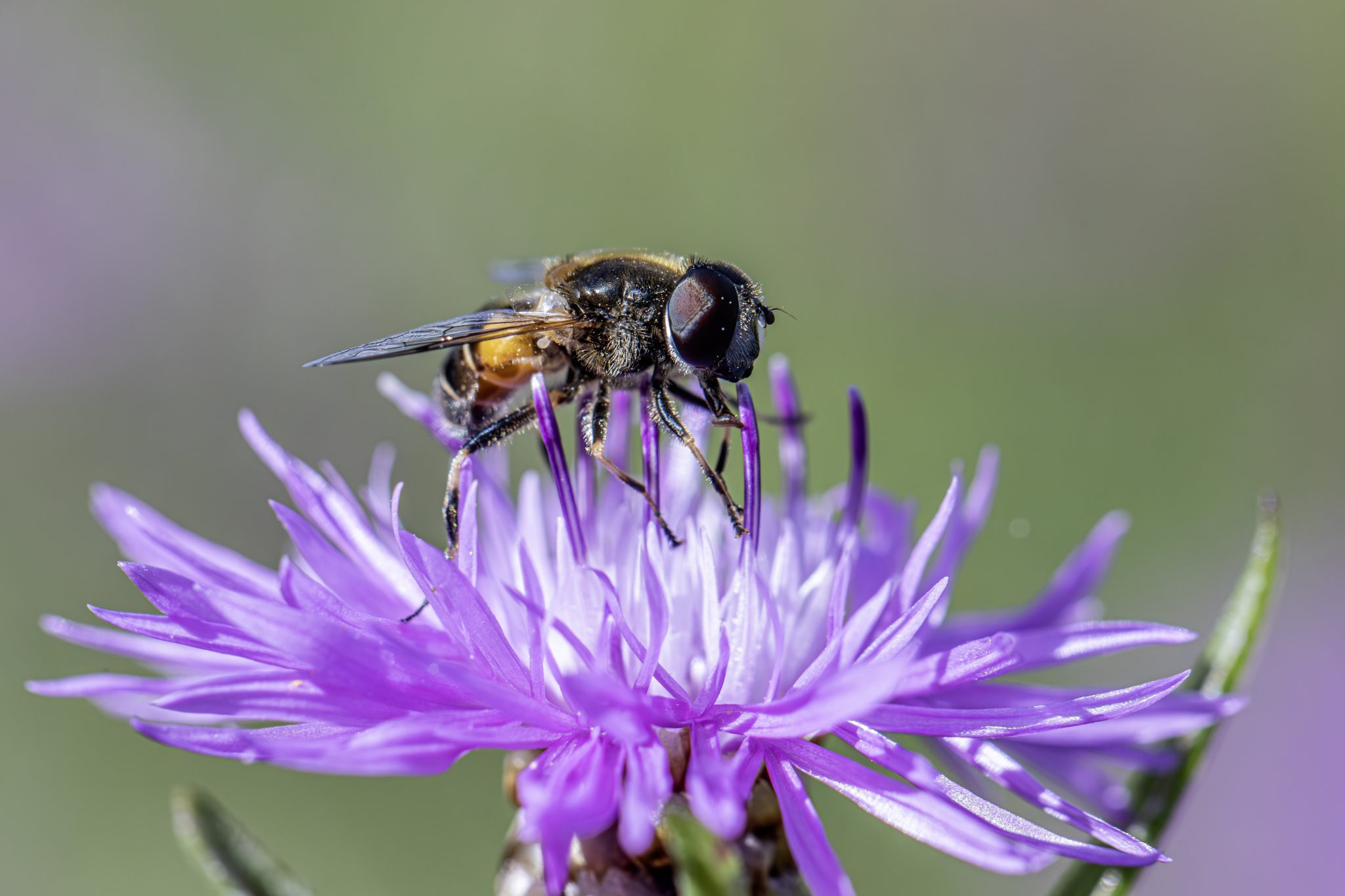Here’s a deep overview of the Orange-spined Drone Fly (Eristalis interrupta), a hoverfly species that often mimics bees for protection.
🪰 Orange-spined Drone Fly (Eristalis interrupta)
🔹 Taxonomy
- Order: Diptera
- Family: Syrphidae (Hoverflies / Flower flies)
- Genus: Eristalis
- Species: Eristalis interrupta
🌍 Distribution and Range
The Orange-spined Drone Fly is a widespread Holarctic species, found in:
- Europe: From northern Scandinavia to southern Europe.
- Asia: Extending across Russia, Siberia, and parts of Central Asia.
- North America: Widely distributed in Canada and the northern United States.
It inhabits temperate regions, with local abundance depending on flowering plant availability.
🏞️ Habitat
- Wetlands, marshes, and bogs — especially near water sources.
- Meadows and forest clearings with diverse wildflowers.
- Gardens and farmland, where it often visits flowering crops.
- Prefers areas where larvae (rat-tailed maggots) can develop in muddy, stagnant water.
✨ Identification Features
The Orange-spined Drone Fly is part of the drone fly group, named for their resemblance to honeybees.
- Size: Medium-sized hoverfly (10–14 mm).
- Coloration:
- Thorax dark, with golden-brown dusting.
- Abdomen with orange-yellow patches/spines along tergites (hence the common name).
- Mimics honeybees (Apis mellifera), which deters predators.
- Wings: Transparent with a faint brownish tint.
- Antennae: Short, typical of hoverflies.
- Flight: Capable of hovering in place and darting quickly between flowers.
🌸 Diet and Role
- Adults: Feed on nectar and pollen from a wide variety of flowers (daisies, dandelions, umbellifers).
- Larvae (Rat-tailed maggots): Aquatic, living in stagnant water rich in organic matter, feeding on detritus and microorganisms.
Ecological Role:
- Important pollinator of wildflowers and crops.
- Helps recycle nutrients through larval feeding.
🔄 Life Cycle
- Eggs: Laid near water bodies with organic-rich mud.
- Larvae: Known as rat-tailed maggots, equipped with a long breathing tube, allowing them to survive in oxygen-poor water.
- Pupae: Form in drier soil or among decaying vegetation near water.
- Adults: Emerge in spring and summer, active from April to October (varies with latitude).
Usually produces multiple generations per year in warmer regions.
🦋 Behavior and Mimicry
- Exhibits Batesian mimicry of bees to deter birds and insectivores.
- Non-stinging, harmless to humans.
- Often seen hovering over flowers or basking in sunny spots.
⚖️ Conservation Status
- Not threatened; widespread and stable populations.
- Beneficial insect for ecosystems and agriculture due to pollination services.
- Sensitive to water pollution and habitat loss, since larvae need clean wetlands.
✅ In summary:
The Orange-spined Drone Fly (Eristalis interrupta) is a widespread hoverfly that mimics bees for protection, plays a vital role as a pollinator, and has fascinating aquatic larvae called rat-tailed maggots. It thrives in wetland-rich landscapes and contributes significantly to biodiversity and agriculture.
Views: 3660
Subscribe to the newsletter:
